Pitaya, commonly referred to as Dragon Fruit, has gained significant attention around the world for its unique look, vibrant color, and health benefits. However, many people often confuse the two terms. While they are similar, there are key differences in the varieties, growing conditions, and the challenges faced by farmers. This article will explore these differences in detail, focusing on the unique characteristics of Mexican Pitaya and comparing them with Dragon Fruit farming practices in other parts of the world. We will dive deep into the reasons behind its high price, the growing conditions, and how new farmers can successfully cultivate this exotic fruit.
What is Pitaya vs Dragon Fruit?
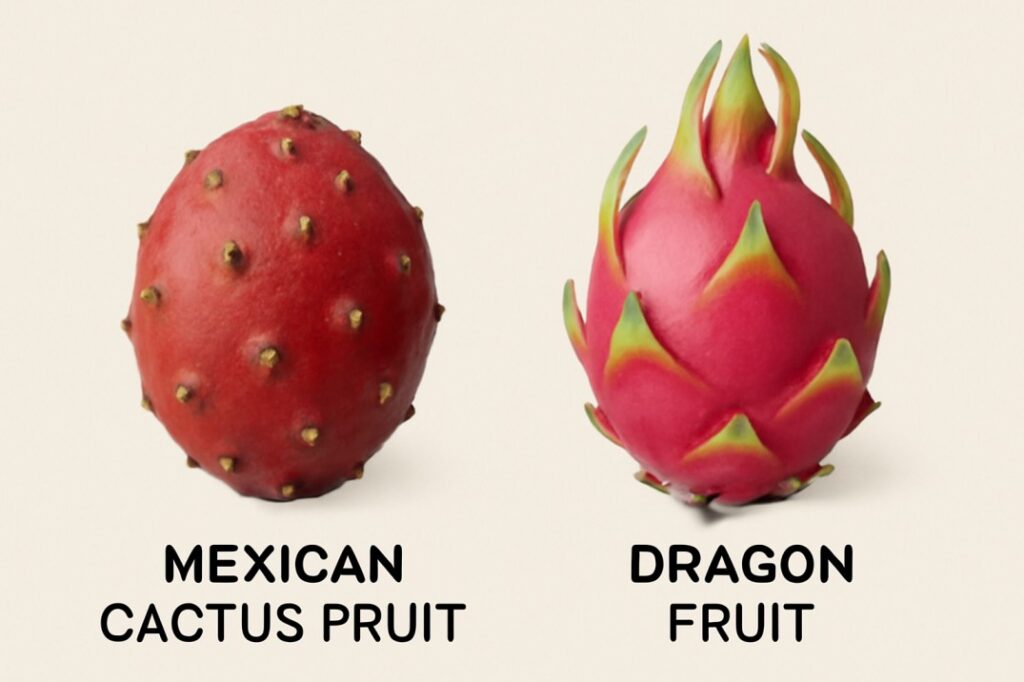
Although both Pitaya and Dragon Fruit are used interchangeably, they refer to the same fruit, but their growing methods and varieties differ significantly depending on geographical location.
- Pitaya Mexicana (Mexican Pitaya): The variety that is originally cultivated in Mexico. It is distinct because it has a sweeter and more succulent taste compared to other varieties.
- Dragon Fruit (Asian Dragon Fruit): This term is often used in Southeast Asia, where different varieties of Pitaya are grown, with slightly different growing conditions and tastes.
1. Climate and Growing Conditions for Pitaya Farming
For Pitaya to thrive, it requires specific climatic conditions that vary between Mexico and Asia. Let’s explore these conditions in more detail.
a. Mexican Pitaya:
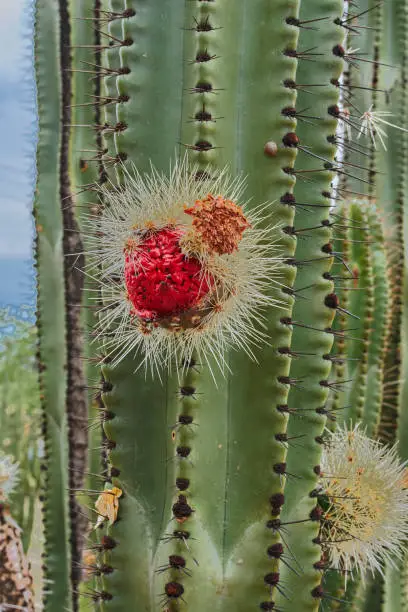
- Climate: Pitaya thrives in a tropical or subtropical climate, with temperatures ranging between 20°C and 30°C. The balanced heat allows the fruit to grow optimally without being affected by harsh winters or excessive rainfall. In Mexico, regions like Baja California, Sinaloa, and Nayarit have ideal conditions for farming Pitaya.
- Detailed Explanation: The moderate temperatures ensure that the plant’s flowers and fruits are not damaged by extreme weather conditions. Consistent heat is necessary because the plant has adapted to these climates over centuries, making it well-suited for dry, warm environments.
- Soil: Pitaya requires well-draining soil rich in organic matter. Farmers select soils with excellent drainage to prevent root rot, which can be a major problem if the soil retains too much moisture.
- Detailed Explanation: The soil composition is crucial to maintaining a healthy root system. If the soil doesn’t drain properly, it could lead to waterlogged roots, causing fungal infections or stunted growth.
- Irrigation: Proper irrigation ensures the plant receives a steady supply of water, which is critical in maintaining the right moisture balance in the soil.
- Detailed Explanation: Regular irrigation helps the cactus maintain consistent growth, preventing dehydration. Over-irrigation, however, can harm the roots, which is why precise water management is key.
b. Asian Dragon Fruit:
- Climate: While Dragon Fruit also thrives in tropical conditions, it can tolerate slightly higher humidity levels than Pitaya Mexicana. These varieties are generally found in regions with hotter, more humid climates.
- Detailed Explanation: The high humidity allows Dragon Fruit varieties to grow faster and produce more fruit. However, too much moisture can lead to diseases like root rot or fungal infections, which is why these varieties are often grown in areas with a good balance of moisture and warmth.
- Soil: Similar to Pitaya Mexicana, Dragon Fruit requires well-drained soil, though it is more adaptable to slightly less fertile soils.
- Detailed Explanation: While Pitaya Mexicana demands soil rich in organic matter, Dragon Fruit can thrive in a wider variety of soil types, as long as the drainage is efficient. This makes it easier for farmers in Asia to grow Dragon Fruit in regions with different soil conditions.
- Irrigation: Regular irrigation is also necessary in Asian climates, particularly in drier areas, though overwatering can be just as damaging.
- Detailed Explanation: For Asian Dragon Fruit, irrigation helps maintain the plant’s health, ensuring it doesn’t suffer from dehydration. However, it’s critical to balance water levels to prevent fungal growth in overly wet conditions.
2. Farming Techniques: Pitaya Mexicana vs Dragon Fruit
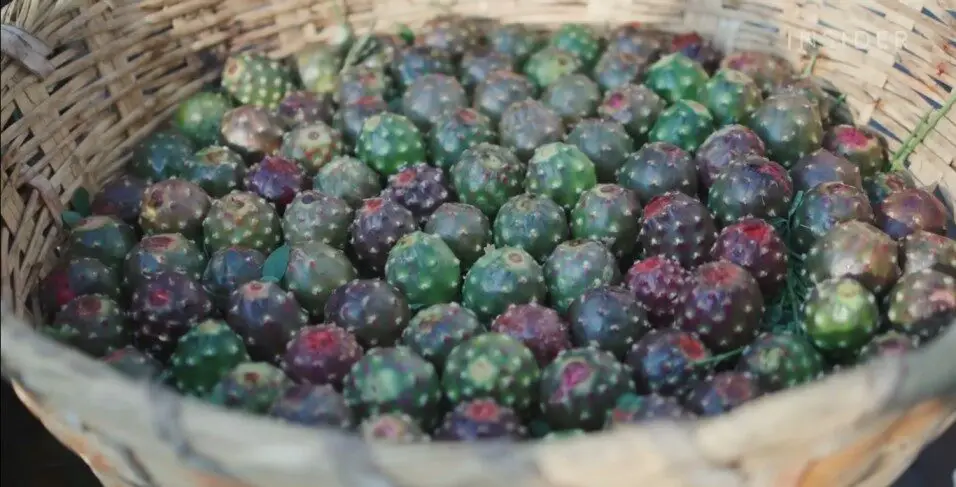
Farming methods for both varieties of Pitaya differ significantly due to the distinct needs of each plant.
a. Mexican Pitaya Farming:
- Cactus Variety: In Mexico, Pitaya is generally grown on organ-pipe cacti, which require extra care due to their sharp thorns. Harvesting these fruits is a challenging task as workers need to carefully handle each plant to avoid injury.
- Detailed Explanation: The organ-pipe cactus has large, sharp spines that make harvesting difficult. Workers are required to wear protective gear, such as gloves and long sleeves, to safely handle the plant. This adds to the labor cost of cultivating Mexican Pitaya.
- Harvesting: Harvesting typically takes place at night to preserve the freshness of the fruit. The quick perishing rate of the fruit means that it must be harvested at the peak of ripeness to ensure it reaches the market in the best possible condition.
- Detailed Explanation: Night harvesting helps keep the fruit cool, which prevents it from spoiling too quickly. The quick degradation of Pitaya Mexicana makes this process essential for ensuring quality and reducing waste.
- Yield: Pitaya plants take about 8 years to start bearing fruit and up to 15 years to reach full maturity. This long growth period contributes to its higher cost.
- Detailed Explanation: A lengthy maturation period means that farmers must wait many years before they can start reaping the rewards of their investment, which increases the overall cost of the fruit.
b. Asian Dragon Fruit Farming:
- Cactus Variety: In Southeast Asia, Dragon Fruit is typically grown on varieties of Hylocereus cacti. These varieties tend to be more prolific, producing more fruit per plant compared to Pitaya Mexicana.
- Detailed Explanation: The varieties of Hylocereus used in Asia are more productive, meaning farmers can expect a greater yield from each plant, which helps reduce the overall cost of production.
- Harvesting: Harvesting Dragon Fruit is less labor-intensive, though it still requires care to avoid damaging the fruit. Unlike Mexican Pitaya, these varieties can be harvested more easily and don’t require night harvesting.
- Detailed Explanation: Since Dragon Fruit varieties are less perishable and have a longer shelf life, they can be harvested during the day, which makes the harvesting process more straightforward and less costly.
- Yield: Dragon Fruit plants reach fruit-bearing age in about 3 to 5 years, much quicker than Pitaya Mexicana.
- Detailed Explanation: The faster maturation means farmers can begin generating income sooner, making Dragon Fruit farming a more profitable venture in the short term.
3. Why is Mexican Pitaya So Expensive?
The high cost of Mexican Pitaya is driven by several factors, including its perishability, labor-intensive harvesting process, and limited production. Let’s break down each of these reasons.
a. Perishability and Distribution Challenges:
- Pitaya Mexicana has a very short shelf life, with the fruit starting to degrade within 24 hours of being harvested. This makes it difficult to transport over long distances, leading to higher shipping costs.
- Detailed Explanation: The perishable nature of Pitaya means that it cannot be stored for long periods. This forces farmers to sell it locally or use expensive cold-chain logistics to get the fruit to international markets quickly.
b. Labor-Intensive Farming and Harvesting:
- The harvesting of Pitaya Mexicana is much more labor-intensive than other fruits. Farmers must carefully remove the fruit from the cactus, avoiding its sharp thorns.
- Detailed Explanation: Harvesting by hand adds a significant labor cost to the production process. Workers need to be skilled in handling the cactus safely to avoid injuries and ensure the fruit is harvested at the right time.
c. Limited Production:
- Mexican Pitaya plants take many years to mature, and the slow rate of production leads to a limited supply of fruit each season.
- Detailed Explanation: The long waiting period between planting and harvesting means that farmers can only produce a small quantity of fruit per year, increasing its rarity and, consequently, its price.
d. Export and Shipping Costs:
- Shipping Pitaya internationally requires special care, including refrigerated transport to maintain freshness. This increases the cost of export.
- Detailed Explanation: Due to the fruit’s short shelf life, farmers must use air freight or refrigerated shipping to maintain quality, which adds significantly to the cost.
4. Future of Pitaya Farming: Challenges and Opportunities
As the demand for Pitaya grows, particularly internationally, farmers face challenges due to climate change and evolving market conditions.
a. Climate Change and Its Impact on Pitaya Farming:
- Climate change could lead to unpredictable weather patterns, such as extreme heat or excessive rainfall, which might impact Pitaya farming.
- Detailed Explanation: Unstable weather could affect crop yields, reduce quality, and disrupt the planting and harvesting cycles, making Pitaya farming more difficult and unpredictable.
b. Sustainability and Innovation in Pitaya Farming:
- Farmers are looking to adopt more sustainable practices, such as controlled-environment agriculture, to mitigate the effects of climate change.
- Detailed Explanation: Innovations like vertical farming, water-efficient irrigation systems, and climate-controlled greenhouses are being explored to make Pitaya farming more resilient to future environmental changes.
Bonus Tip for Aspiring Farmers: How to Grow Dragon Fruit or Pitaya in Your Backyard
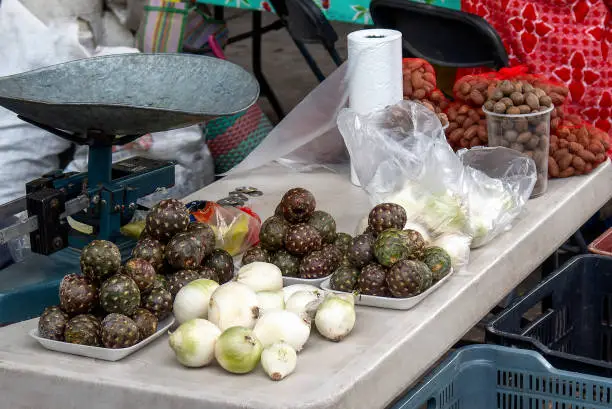
If you’re interested in growing Pitaya or Dragon Fruit at home, follow these essential tips:
- Choose the Right Variety: Choose a variety suitable for your climate. Mexican Pitaya thrives in hotter, drier climates, while Asian Dragon Fruit is more adaptable to humid conditions.
- Soil and Drainage: Ensure the soil is well-drained, and consider adding organic compost to improve fertility.
- Support: Provide a trellis or vertical support system to help the plant grow upright and increase fruit yield.
- Pruning: Regularly prune the plant to remove dead or unhealthy branches and encourage better fruit production.
- Patience: Growing Pitaya takes time, so be patient as the plant matures over the course of several years.
FAQ: Pitaya vs Dragon Fruit
Q1. Why is Pitaya Mexicana more expensive than Dragon Fruit in Asia?
Pitaya Mexicana’s high cost is due to its short shelf life, labor-intensive harvesting process, and limited production. Additionally, its need for refrigerated shipping adds to its cost.
Q2. How long does it take for a Pitaya plant to produce fruit?
Pitaya plants take about 8 years to start bearing fruit, and full maturity takes up to 15 years. In contrast, Dragon Fruit varieties in Asia can begin fruiting within 3 to 5 years.
Q3. What are the best conditions for growing Pitaya in a home garden?
Pitaya requires warm temperatures, well-drained soil, and a lot of sunlight. Ensure the plant has enough space to grow vertically on a trellis and prune regularly to promote healthy growth.
Q4. How do climate change and weather patterns affect Pitaya farming?
Climate change may lead to more extreme weather conditions, such as droughts or heavy rainfall, which can negatively impact the growth and production of Pitaya. Adaptation strategies will be necessary to maintain production.
Q5. How can farmers sustain Pitaya farming in changing climatic conditions?
Farmers can adopt more sustainable farming practices, such as using efficient irrigation systems, exploring controlled-environment agriculture, and adopting climate-resilient crops to mitigate the effects of climate change.
This detailed guide provides comprehensive insights into the farming practices, climate conditions, and challenges that influence the cost and cultivation of Pitaya. Whether you’re a new farmer or someone interested in gardening, this information can help you make informed decisions about growing this exotic fruit.
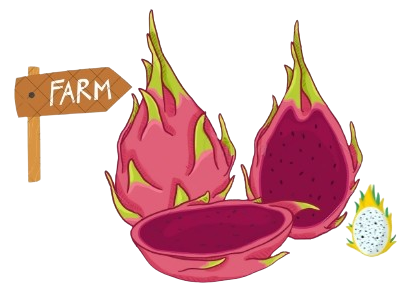
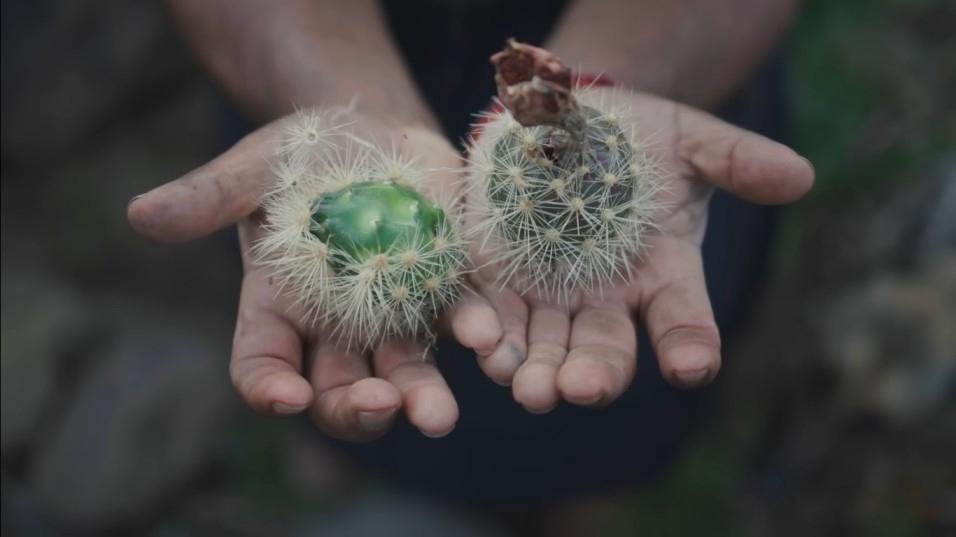
1 thought on “Pitaya vs Dragon Fruit: Why one is Better for Your Health”